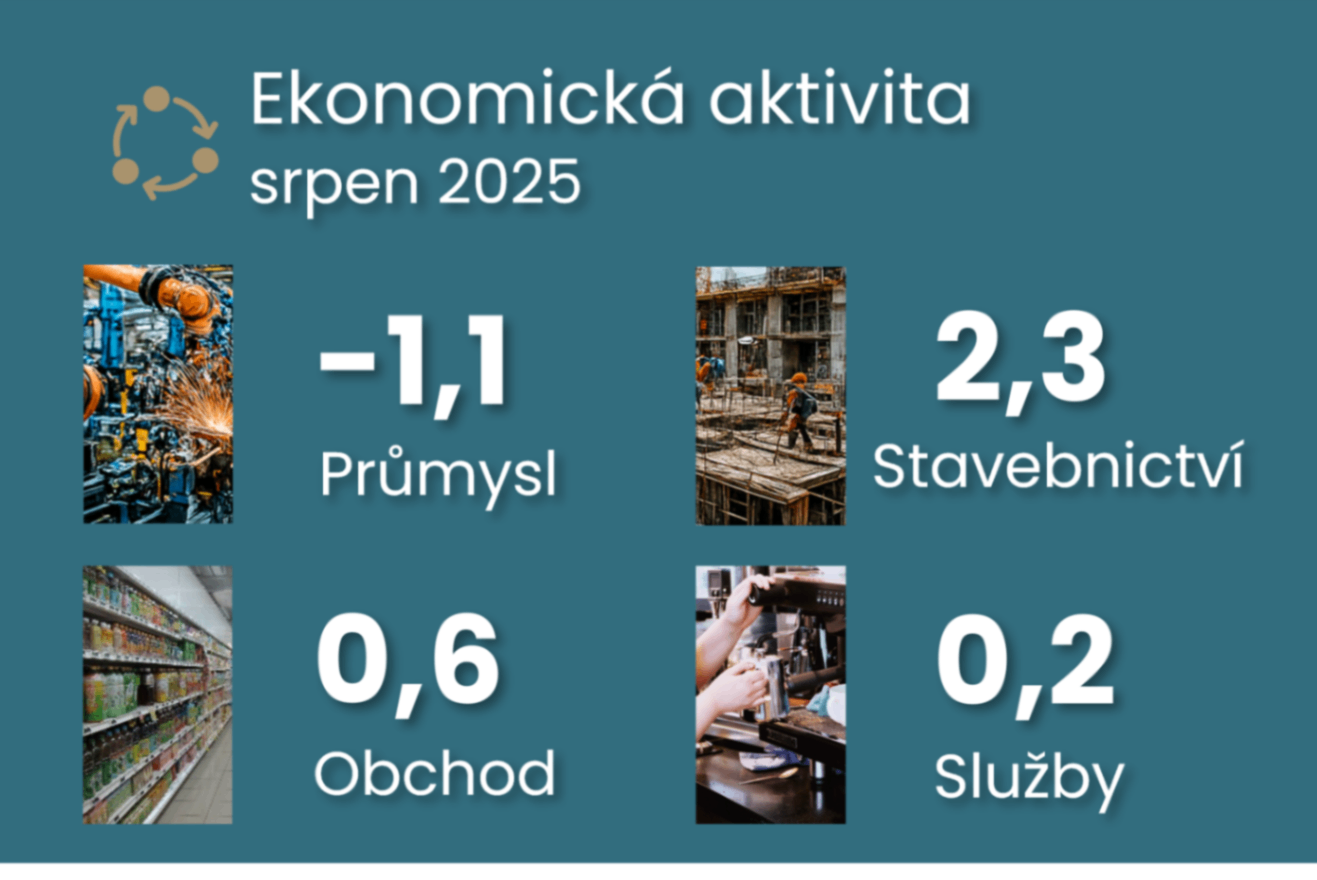August retail and construction sectors kept the economy growing
Comment by Jaromír Šindel, Chief Economist of the CBA: The continuation of the construction boom and the recovery in retail sales in August was dampened by the return of weaker industrial production, despite stronger exports. However, the positive sentiment in September suggests that the slowdown in GDP growth in Q3 may not be as pronounced as the July and August figures suggest.

Industrial production fell again after a rebound in July (-1.1% m/m). In recent months, a decline in manufacturing production is evident due to energy-intensive sectors, while the rest, including autos, have rather been stuck in place (see Chart 3). Sentiment remains subdued, with energy output falling in September , but the end of the shutdown in the iron and steel sector may contribute to a rebound in industrial activity in October.
Industrial weakness persists despite a strong rebound in export activity (+4.9% after a nearly 4% decline in July), including in the automotive sector. Growth has been evident across sectors in recent months (see Chart 5 with exports in euro terms), contributing to a strong foreign trade surplus (CZK 26bn in August vs. an average surplus of CZK 16.3bn in previous months this year). This may dampen fears of a stronger crown.
Construction output continued to expand for the fourth month in a row (+2.3% in August). While both components (buildings and infrastructure) are growing, strong civil engineering confirms that government investment is significantly supporting economic growth this year.
Services sales remained weak after a modest August rebound, while retail sales returned to positive growth in August after stumbling in July. This may have been aided by August's month-on-month increase in industrial payrolls, which, however, after weaker momentum in the previous three months, suggests a slowdown in annual growth to 5% in Q3 after 6.5% in Q2. This could bring a relief in inflationary pressures after the strong 7.8% annual wage growth in the whole economy in Q2.
Any improvement in the September data may represent a positive signal for our forecast of 2.1% annual GDP growth this year. Economic activity for July and August suggests a slowdown in GDP growth to 0.3% q-o-q after 0.5% in Q2, which would slow annual GDP growth to 2.3% from 2.6% in Q2. This slowdown may be countered by a larger foreign trade surplus, but should be counteracted by already strong inventory growth in Q2. The same quarter-on-quarter momentum in the final quarter of this year would lead to full-year GDP growth of 2.3% in 2025.
August's continuation of the construction boom and the recovery in retail sales were dampened by the return of weaker industrial production, despite stronger exports.
August's continuation of the construction boom and the recovery in retail sales were dampened by the return of weaker industrial production, despite stronger exports.
In recent months, there has been a noticeable decline in manufacturing production due to energy-intensive sectors, including autos, while the rest of the industry has been rather stuck in place
Strong civil engineering confirms that government investment is significantly supporting economic growth this year.
Growth has been evident across sectors in recent months, contributing to a strong foreign trade surplus ...
... which may dampen fears of a stronger crown